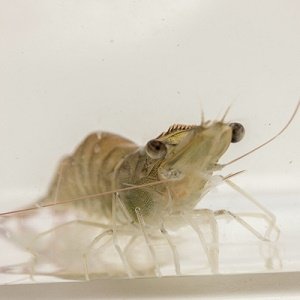The emergence of infectious diseases is one of the greatest threats to the intensification of aquaculture. Prevention and control measures have become the primary strategy and have been extensively studied. However, little is known about the epidemiological aspects of disease transmission in aquatic ecosystems.
Despite the commercial availability of relatively robust vaccines for several bacterial diseases, their effectiveness depends on various factors, such as differences in bacterial species and serotypes, mutations, and host factors.
A groundbreaking study by the Pathogen Transmission and Disease Research Group at the Institute of Marine Research employs a spatiotemporal hybrid simulation model known as DTU-DADS-Aqua to forecast the spread of a bacterial disease in fish farms in two regions, Romsdalsfjord in Norway and Gujwa in South Korea.
This promising approach could revolutionize how we address epidemiological challenges in aquaculture.
The Study and Its Simulation Model
The highlight of this study is the use of the DTU-DADS-Aqua simulation model, which takes into account spatiotemporal factors to predict disease spread.
The DTU-DADS-Aqua framework can track the spread of infectious pathogens through water between fish farms or even net pens, using compartmental and agent-based models that consider the hyperconnectivity of farm sites based on distance.
The DTU-DADS-Aqua model is based on the assumption that infectious pathogens are horizontally transmitted through marine distance connectivity in seas, fjords, rivers, and lakes, considering dozens of relevant parameters for pathogen factors, host factors, and anthropogenic disease control actions (e.g., surveillance, detection, and disease depopulation).
The simulation model assessed the behavior of disease transmission among fish farms under different “powers” of transmission based on the distance between farms (Scalinglnf), host susceptibility (RelSusceptibility), the origin of the disease, and the capacity to cull fish.
Stay Always Informed
Join our communities to instantly receive the most important news, reports, and analysis from the aquaculture industry.
Key Findings
“The modeling and simulations used in this study cannot reflect the real situation with 100% accuracy due to insufficient data and/or assumptions of many epidemiological factors,” the researchers report.
Despite this, the study’s results revealed significant findings.
Firstly, the distance between fish farms was significantly associated with disease transmission. Under most simulation conditions, disease transmission between different bay management areas (BMAs) in Romsdalsfjord was not observed.
In contrast, in the Gujwa region, where the distances between fish farms are relatively short, the spread of infectious disease was strongly influenced by the distance between farms.
The researchers also describe that geographical differences in aquaculture zones (e.g., semi-closed fjords and open sea) could yield different epidemiological outcomes between regions. “However, it is clear that the distance between fish farms is the most relevant epidemiological factor for disease transmission,” they reported.
Additionally, host susceptibility (RelSusceptibility) proved to be a critical factor in disease transmission patterns. When RelSusceptibility varied within a range of 0.5–1, it had little impact on the likelihood of disease transmission. However, lower ranges (0.2 and 0.05) of RelSusceptibility resulted in a significant decrease in the area affected by disease spread.
In this context, the researchers emphasize that the use and development of more effective vaccines or the development of disease-resistant fish can significantly reduce mortality and disease transmission.
They also report that the fish’s stress level, nutrient availability, host population, and farm cultivation system significantly affect host health conditions directly linked to disease outbreaks.
Final Considerations
The study underscores the importance of simulation models in predicting the spread of infectious diseases in aquaculture and highlights the need to consider factors such as the distance between farms and host susceptibility when developing prevention and control strategies.
It is essential to note that eradication measures can control disease transmission patterns, but their effectiveness can vary dramatically depending on the geographical environment.
In summary, through a comparative analysis of disease transmission and management scenarios, this study demonstrates the potential of existing simulation models to predict the spread of infectious diseases under different epidemiological circumstances and quarantine actions.
The study was funded by the Institute of Marine Research (Havforskningsinstituttet).
Reference (open access)
Roh H and Kannimuthu D (2023) Assessments of epidemic spread in aquaculture: comparing different scenarios of infectious bacteria incursion through spatiotemporal hybrid modeling. Front. Vet. Sci. 10:1205506. doi: 10.3389/fvets.2023.1205506.
Editor at the digital magazine AquaHoy. He holds a degree in Aquaculture Biology from the National University of Santa (UNS) and a Master’s degree in Science and Innovation Management from the Polytechnic University of Valencia, with postgraduate diplomas in Business Innovation and Innovation Management. He possesses extensive experience in the aquaculture and fisheries sector, having led the Fisheries Innovation Unit of the National Program for Innovation in Fisheries and Aquaculture (PNIPA). He has served as a senior consultant in technology watch, an innovation project formulator and advisor, and a lecturer at UNS. He is a member of the Peruvian College of Biologists and was recognized by the World Aquaculture Society (WAS) in 2016 for his contribution to aquaculture.




